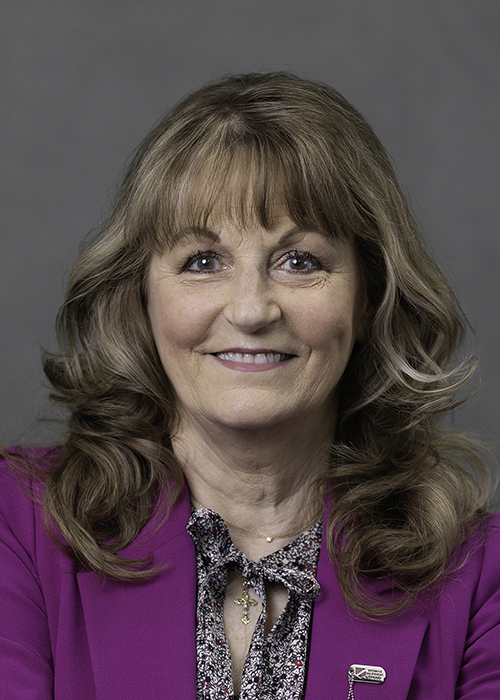Experts and veterans’ advocates testifying June 7 before the Senate Committee on Veterans’ Affairs discussed the need to improve long-term care and supportive services for veterans as the nation undergoes a historic population shift.
“The older population in America is growing,” M. Christopher Saslo, the VA’s assistant under secretary for patient care services and its chief nursing officer, told committee members. “For the first time in U.S. history, adults over the age of 65 are on pace to outnumber children under 18 by 2034.”
[TAKE ACTION: Ask Your Legislators to Support Services for Aging and Disabled Veterans]
MOAA has advocated for years to expand veterans’ access to long-term care and home and community-based services (HCBS). The need to expand these services is even greater today as the VA experiences exponential growth in this population. Veterans over the age of 65 represent a greater portion of the VA patient population than in other health care systems, according to the VA, and as these veterans age, the department expects about 80% will need long-term support services.
The VA has shifted its focus in recent years from facility-based care (like nursing home care) and community living centers to providing veterans care in their homes, as 90% of Americans would prefer aging in place.
The VA served about 412,000 veterans in this area of care last year, spending $3.9 billion on HCBS. The department acknowledges veterans are happier receiving their care at home, and allowing them to do so saves taxpayer dollars.
Along with home-based options, there are 134 VA community living centers providing 24-hour skilled nursing care, including other supportive services provided through community nursing home contracts. Veterans also receive nursing home care at 163 state veterans homes located in all 50 states and Puerto Rico.
While the veteran population is expected to decrease by 8% between FY 2019-2039, the number of veterans enrolled in VA health care age 85 and older will increase by 38%, at a projected cost of more than $15 billion a year. The VA alone will not be able to address this growing trend. Support from Congress, other federal agencies like the Centers for Medicare and Medicaid Services (CMS), and state and local partners will be required to meet the needs of veterans.
[FROM 2022: How the VA Plans to Keep Up With an Aging Veteran Population]
Specialized Care for Veterans
“For spinal cord injury or disorder (SCI/D) veterans, 100% of these veterans will need long-term care for the rest of their life,” Paralyzed Veterans of America (PVA) Executive Director Carl Blake emphasized in his opening statement.
“We frequently hear it costs a lot to provide this care. Our members are tired of political posturing and election year politics that are standing in the way of much needed reforms like the Dole Act, CAREERS Act, and the BUILD Act. … It’s time to get it done and do the right thing.”
There are six VA SCI/D centers in the country with 160 beds, Blake told lawmakers. Only one of those facilities is west of the Mississippi; it covers two-thirds of the country. These are facilities PVA members ultimately will end up in to meet their very complex needs, Blake said — the VA is the best and only health care system that can care for SCI/D veterans.
[TAKE ACTION: Urge Your Lawmakers to Support Services for Older Veterans]
The VA also relies on state veterans homes to provide long-term care for veterans. A partnership between federal and state governments dating back to the post-Civil War era, this program represents half of institutional care for veterans, according to the VA.
There needs to be an expansion of both HCBS and traditional nursing home care, National Association of State Veterans Homes (NASVH) President Whitney Bell told the committee.
“While we support VA putting more emphasis on serving veterans at home, this should be an addition to, not a subtraction from, facility-based care,” she said, adding that the demand for nursing home care is neither diminishing nor going away.
Like other witnesses, Bell talked about the pandemic’s devastating impact on both the workforce and the finances of these facilities.
Nursing homes lost more than 250,000 workers during the pandemic. Recruiting and rebuilding the workforce continues to be a struggle – one that’s exacerbated by underfunding by federal and state governments.
Jonathan Blum, principal deputy administrator and chief operating officer of CMS, touched on several areas the agency is focused on after the pandemic, including improvements to nursing home quality, provider certification and enforcement processes, nursing home staffing, transparency, and access to care.
“The administration is committed to continuing to improve the safety and quality of care at the nation’s nursing homes,” Blum said. “The time is now for a bold approach and a strengthened commitment to deliver on our moral responsibility to care for our nation’s elders and people with disabilities, including our veterans.”
Legislation Supports Needed Changes
Carla Wilton, chief operating officer of Immanuel Lutheran Communities – a community nursing home in Montana, home of Sen. Jon Tester, the committee chair – began her oral remarks by thanking Tester for introducing the MOAA-backed Expanding Veterans’ Options for Long Term Care Act (S. 495), which would provide veterans with more options to access long-term care services.
“While our relationship with VA has been positive, we do have concerns,” Wilton said. “The VA is the slowest to pay of all our payer sources. Then, if a veteran needs a referral to a specialist, we must go back to the provider at VA because our medical director can only provide primary care services, which can takes several weeks causing stress for the veteran and their family.”
Witnesses called on CMS to play a greater role in ensuring payment rates were adequate to reduce the financial impact on long-term care facilities, and on Congress to reinstate waivers given during the pandemic for occupancy rates and veteran percentage requirements in facilities.
Additionally, Sen. Jerry Moran (R-Kan.), the committee’s ranking member, touched on a provision in the Dole Act that would expand outreach to veterans and their caregivers. He and other members shared their belief that the VA needs to do a better job of informing veterans and caregivers of available resources and services.
“We talk about a promise we made when men and women signed up to serve and that includes high quality care — when they need it and when they come back home,” Tester said in closing remarks. “It is obvious we have more work to do to meet that obligation.”
[RELATED: These MOAA-Backed Bills Will Help the VA Support Older Veterans]
While the VA has implemented a plan to accelerate HCBS and long-term care programs, ongoing implementation efforts continue to lag demand and access remains significantly limited at medical centers across the country. A top MOAA health care priority this Congress is to secure funding, staff, and other resources to accelerate delivery of VA HCBS, long-term care, and caregiver support.
Click here to join MOAA’s efforts in achieving this goal. Send a letter to your members of Congress and urge them to support legislation to expand and accelerate veteran’s access to HCBS, long-term care, and caregiver support.
 Tips for Lifelong Caregiving
Tips for Lifelong Caregiving
MOAA has partnered with the Elizabeth Dole Foundation to provide an online resource outlining legal and financial support available to multiple generations of caregivers.

